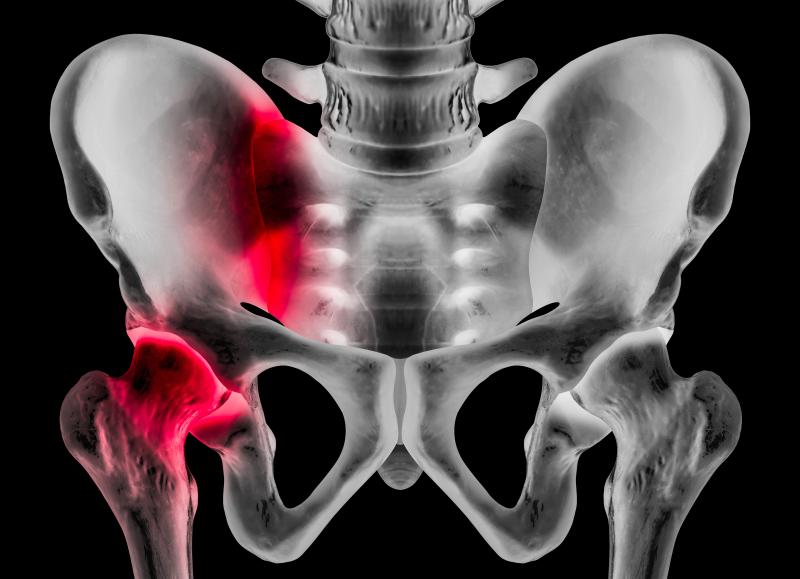
Fractures, particularly major osteoporotic fractures, are more likely to develop in people with atopic eczema, a recent study has found.
Researchers conducted a matched cohort study including 526,808 atopic eczema patients (58.4 percent female). The outcome of interest was the likelihood of sustaining major osteoporotic fractures in the hip, pelvis, spine, wrist and proximal humerus, compared with 2,569,030 healthy comparators (58.0 percent female). All participants were at least 18 years of age.
Fully adjusted Cox regression analysis found that the likelihood of developing any fracture was significantly higher in those with atopic eczema (hazard ratio [HR], 1.07, 99 percent confidence interval [CI], 1.05–1.09).
Disaggregating according to site of fracture revealed a similar effect of atopic eczema on wrist (HR, 1.06, 99 percent CI, 1.01–1.10), spinal (HR, 1.14, 99 percent CI, 1.06–1.23) and hip (HR, 1.06, 99 percent CI, 1.02–1.11) fractures. No such trend was apparent for pelvic and proximal humeral fractures.
Eczema severity likewise emerged as an important factor. For example, there was a 6-percent increase in the risk of spinal fracture in those with mild eczema (HR, 1.06, 99 percent CI, 0.96–1.17). In comparison, the risk increments in those with moderate and severe eczema were 22 percent (HR, 1.22, 99 percent CI, 1.10–1.36) and 109 percent (HR, 2.09, 99 percent CI, 1.66–2.65), respectively.
Severe atopic eczema also resulted in strong increases in the risks of pelvic (HR, 1.66, 99 percent CI, 1.26–2.20) and hip (HR, 1.50, 99 percent CI, 1.30–1.74) fractures.